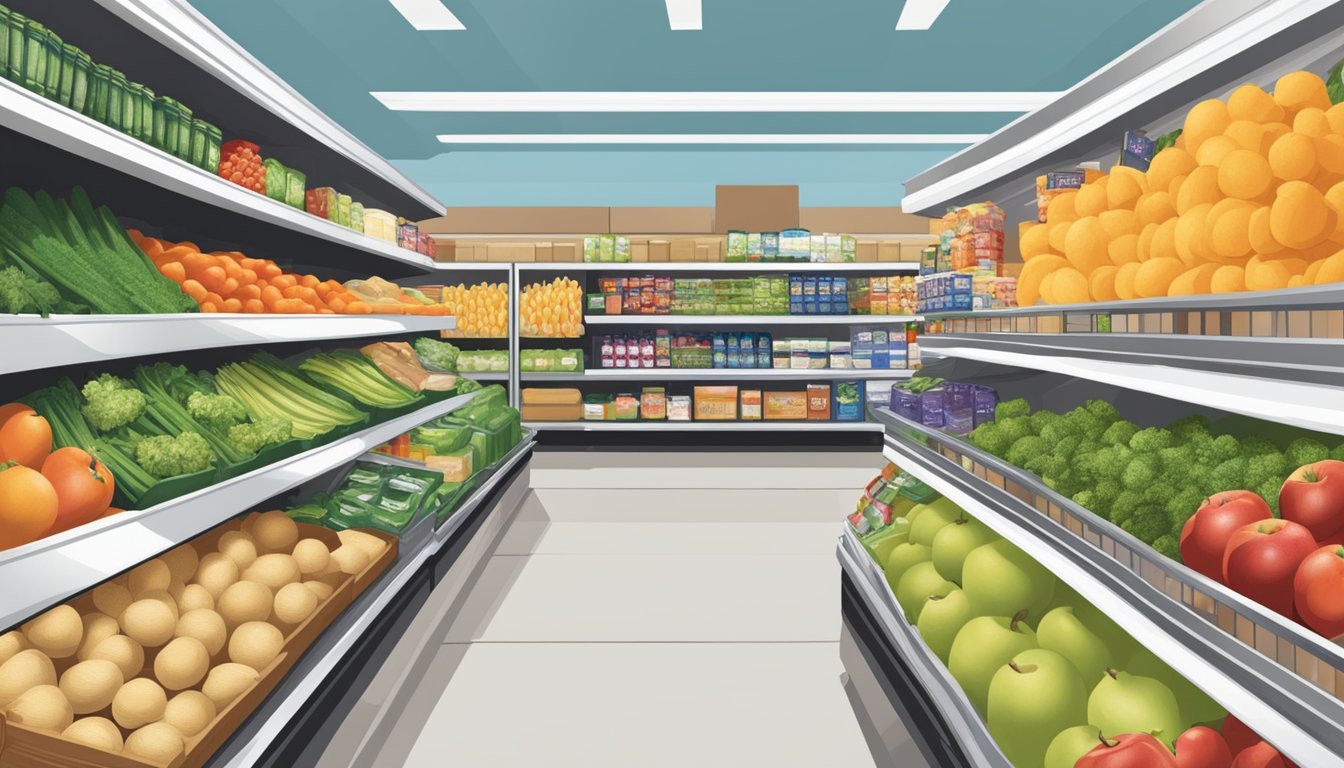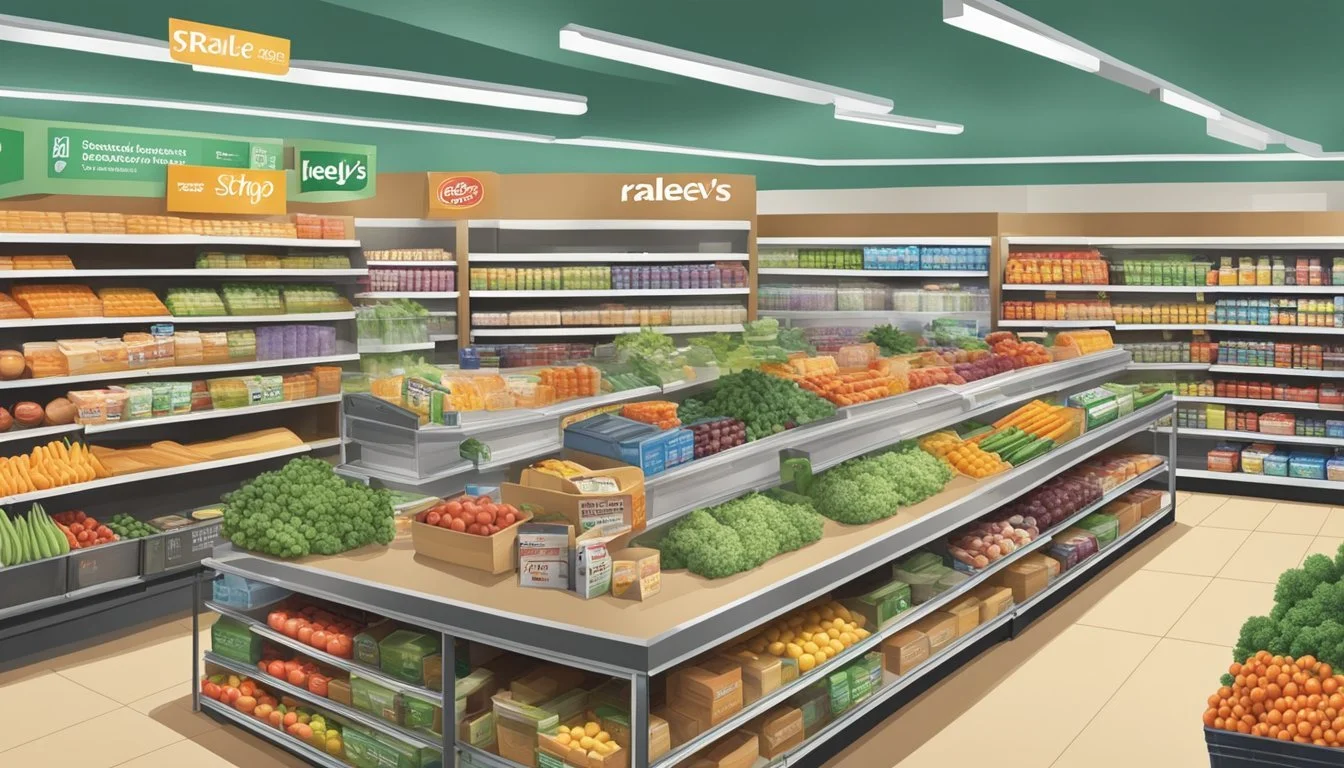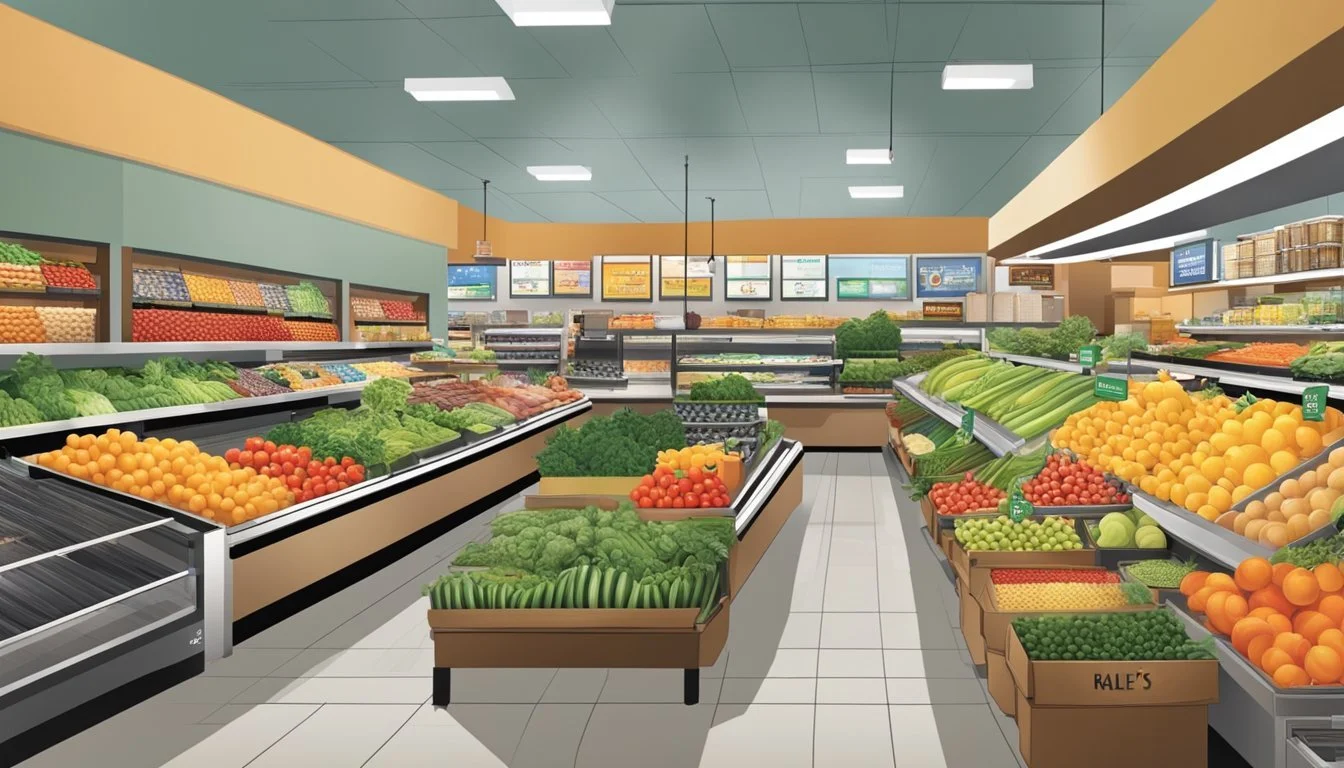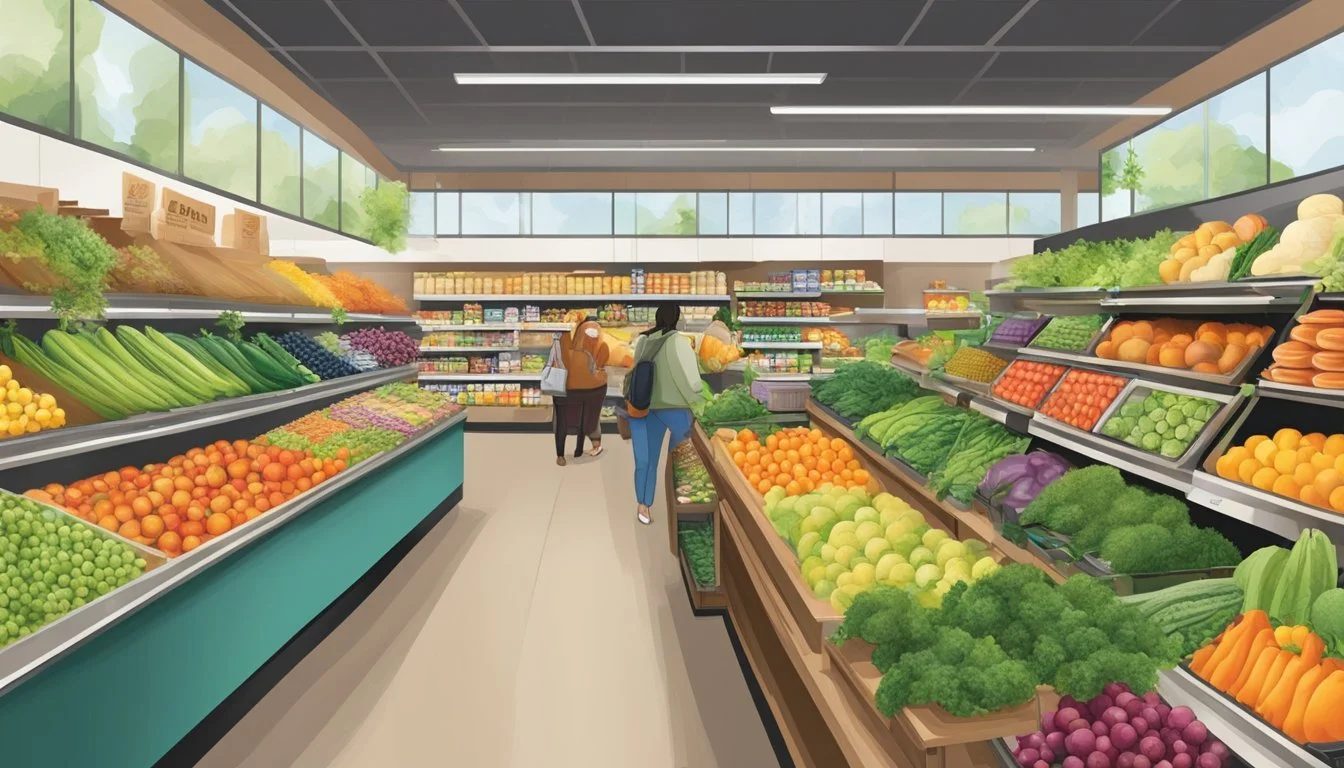Raley's vs Stop & Shop
A Comprehensive Comparison of Price, Quality, and Service
Raley's and Stop & Shop are two prominent grocery store chains serving different regions of the United States. Raley's operates primarily in Northern California and Nevada, while Stop & Shop has a strong presence in the Northeast. Both supermarkets aim to provide customers with quality products and competitive prices.
When comparing Raley's and Stop & Shop, customers often find that Raley's offers a more upscale shopping experience with a focus on fresh, locally-sourced products, while Stop & Shop provides a wider selection of budget-friendly options. Raley's is known for its emphasis on organic and natural foods, as well as its commitment to supporting local farmers and producers. Stop & Shop, on the other hand, tends to carry more national brands and offers frequent sales and promotions.
The choice between these two grocery stores largely depends on individual preferences and priorities. Customers who prioritize high-quality, specialty items and a curated shopping experience may prefer Raley's. Those looking for affordable prices on everyday essentials and a diverse product range might find Stop & Shop more suitable. Ultimately, both supermarkets strive to meet the needs of their respective customer bases through distinct approaches to grocery retail.
Company Profiles
Raley's and Stop & Shop are two prominent grocery chains with rich histories and strong regional presences. Both companies have evolved significantly since their founding, expanding their operations and adapting to changing consumer needs.
History of Raley's
Raley's was founded in 1935 by Thomas P. Raley in Placerville, California. The company started as a single store and gradually expanded throughout Northern California and Nevada.
In the 1970s, Raley's acquired Bel Air Markets and Nob Hill Foods, broadening its market reach. The company continued to grow, introducing new store concepts like Raley's O-N-E Market, focusing on organic and natural products.
Today, Raley's is a privately-owned, family-operated grocery company headquartered in West Sacramento, California. It operates stores under various banners, including Raley's, Bel Air, and Nob Hill Foods.
History of Stop & Shop
Stop & Shop traces its roots back to 1914 when the Rabinowitz family opened a small grocery store in Somerville, Massachusetts. The company grew steadily, pioneering the supermarket concept in the 1930s.
In 1996, Stop & Shop merged with Giant Food Stores, significantly expanding its presence in the Mid-Atlantic region. The company became part of Ahold Delhaize, a Dutch retail conglomerate, in 2016.
Stop & Shop now operates over 400 stores across the Northeastern United States. It has embraced technology and sustainability initiatives, including the introduction of self-service checkout and energy-efficient store designs.
Range of Products
Raley's and Stop & Shop offer diverse product selections to meet customers' needs. Both chains stock essentials and specialty items, but differences exist in their offerings across key departments.
Produce Selection
Raley's prides itself on fresh, high-quality produce. The chain emphasizes locally-sourced fruits and vegetables when possible. Their produce sections typically feature a wide variety of organic options.
Stop & Shop maintains a solid produce selection with competitive prices. The chain offers both conventional and organic produce. Their stores often have pre-cut fruit and vegetable options for customer convenience.
Both stores provide seasonal produce, but Raley's tends to have a broader selection of specialty and exotic fruits and vegetables.
Meat and Seafood
Raley's meat department is known for its quality cuts and variety. The chain offers prime, choice, and select grades of beef. Their seafood counters typically stock both fresh and frozen options, including sustainably sourced fish.
Stop & Shop provides a standard selection of meat and poultry. Their seafood departments vary by location, with larger stores offering more extensive options. The chain focuses on value, often featuring weekly specials on popular cuts.
Both stores offer organic and free-range meat options, but Raley's generally has a wider selection in this category.
Bakery and Deli
Raley's in-store bakeries produce a range of fresh breads, pastries, and cakes daily. Their delis offer made-to-order sandwiches, hot foods, and a variety of prepared salads and side dishes.
Stop & Shop bakeries provide fresh-baked goods and custom cake options. Their deli counters feature sliced meats and cheeses, along with prepared foods and rotisserie chickens.
Both chains offer catering services, but Raley's tends to have more gourmet options in their prepared foods section.
Organic and Specialty Items
Raley's has a strong focus on organic and specialty products. The chain offers its own line of organic items and stocks a wide range of gluten-free, vegan, and international foods.
Stop & Shop carries organic options across departments but may have a more limited selection compared to Raley's. The chain does offer specialty items, particularly in larger store locations.
Both stores have expanded their plant-based product offerings in recent years. Raley's typically provides more choices in this category, including lesser-known brands and innovative products.
Pricing Strategies
Raley's and Stop & Shop employ distinct pricing approaches to attract and retain customers. Their strategies encompass everyday pricing, promotional discounts, and competitive positioning within their respective markets.
Everyday Prices
Raley's focuses on maintaining competitive everyday prices across its product range. The chain carefully tracks consumer demands to align its pricing, especially during inflationary periods. This approach allows Raley's to offer consistent value to shoppers without relying heavily on fluctuating promotions.
Stop & Shop, in contrast, tends to have slightly higher baseline prices on common items. However, the store compensates for this with frequent sales and promotions. This strategy caters to shoppers who enjoy hunting for deals and planning their purchases around weekly specials.
Discounts and Savings
Raley's offers targeted discounts through its loyalty program and digital coupons. The store uses data-driven insights to provide personalized savings to customers based on their shopping habits.
Stop & Shop implements a more aggressive promotional strategy. The chain frequently uses loss leaders - deeply discounted popular items - to draw customers into stores. Weekly circular ads feature numerous price reductions across departments.
Both stores provide digital coupons and app-based savings to tech-savvy shoppers. These tools allow customers to stack discounts and maximize their savings on each trip.
Comparative Price Analysis
When comparing common grocery items, Stop & Shop often emerges as the price winner during promotional periods. Its rotating sales can lead to significant savings for strategic shoppers.
Raley's pricing tends to be more stable, with moderate everyday prices. This consistency can benefit customers who prefer predictable costs without having to track weekly deals.
For a typical family spending $250 weekly on groceries, the potential savings between the two stores can vary. Shoppers who take full advantage of Stop & Shop's promotions might save 15-20% compared to regular prices. Raley's customers may see more modest but consistent savings of 5-10% through everyday low prices and targeted discounts.
Customer Experience
Raley's and Stop & Shop offer distinct customer experiences, with each chain prioritizing different aspects of service and store atmosphere. Both aim to satisfy shoppers, but their approaches differ in key areas.
Service Quality
Raley's prides itself on personalized customer service. Employees are typically well-trained and knowledgeable about products. They often go the extra mile to assist shoppers, offering recipe suggestions and helping locate items.
Stop & Shop focuses on efficiency in its service model. Staff members are generally courteous and helpful, but interactions may be more brief. The chain emphasizes self-service options to streamline the shopping experience.
Both stores provide assistance at the deli and bakery counters. Raley's tends to have more staff available on the floor for questions, while Stop & Shop relies more on clear signage and store layout to guide customers.
Store Cleanliness and Layout
Raley's stores are known for their clean and well-maintained interiors. Aisles are typically wide and uncluttered, making navigation easy. The chain often features attractive displays and a logical product arrangement.
Stop & Shop maintains a tidy appearance but may not have the same level of polish as Raley's. Their stores are designed for practicality, with a straightforward layout that allows for quick shopping trips.
Both chains regularly clean high-touch areas and restock shelves throughout the day. Raley's sometimes incorporates more upscale decor elements, while Stop & Shop keeps things simple and functional.
Checkout Efficiency
Raley's checkout process is generally smooth, with an emphasis on personal interaction. Cashiers are often trained to engage in friendly conversation while efficiently scanning items. The chain typically offers both staffed lanes and self-checkout options.
Stop & Shop has invested heavily in streamlining checkout. They offer numerous self-checkout kiosks and have implemented scan-as-you-shop technology in many locations. This approach can significantly reduce wait times during busy periods.
Both stores manage lines during peak hours, but Stop & Shop's focus on technology may result in faster average checkout times. Raley's, while efficient, places more emphasis on the personal touch during the transaction process.
Additional Services and Features
Raley's and Stop & Shop offer various extra services to enhance the shopping experience. These include loyalty programs, delivery options, and in-store amenities that cater to different customer needs.
Loyalty Programs
Raley's Something Extra program rewards shoppers with points on eligible purchases. Members earn 1 point per dollar spent, which can be redeemed for discounts on future orders. The program also provides personalized deals and exclusive offers.
Stop & Shop's GO Rewards program offers similar benefits. Customers earn points on purchases, which can be used for gas savings or grocery discounts. The program includes digital coupons and personalized offers based on shopping history.
Both loyalty programs are free to join and provide mobile apps for easy access to rewards and savings.
Grocery Delivery Options
Raley's provides online ordering and delivery through their eCart service. Customers can choose from same-day delivery or pickup options. The service covers a wide range of products, including fresh produce and prepared meals.
Stop & Shop partners with Instacart for grocery delivery. Shoppers can order online or through the Instacart app for same-day delivery. The store also offers a pickup service called Stop & Shop Pickup, allowing customers to order online and collect their groceries at a designated time.
Both chains have expanded their delivery services to meet increased demand for convenient shopping options.
In-Store Amenities
Raley's stores often include pharmacies, offering prescription services and health consultations. Many locations feature in-store cafes or dining areas where customers can enjoy freshly prepared meals or coffee.
Stop & Shop also provides in-store pharmacies at many locations. The chain offers immunization services and medication counseling. Some stores include bank branches, providing added convenience for customers.
Both retailers prioritize family-friendly shopping experiences with wide aisles and clean environments. Raley's and Stop & Shop strive to create satisfying in-store experiences through helpful staff and well-organized layouts.
Brand Perceptions and Market Presence
Raley's and Stop & Shop have distinct brand images and market positions. Consumer ratings and regional dominance play key roles in shaping their reputations and growth strategies.
Consumer Ratings and Reviews
Raley's enjoys a positive reputation among customers. The chain's focus on health and nutrition resonates with many shoppers. Its commitment to locally sourced produce and high-quality meats has earned praise. Raley's O-N-E Market concept further enhances its image as a health-conscious retailer.
Stop & Shop, on the other hand, faces mixed reviews. Consumer Reports surveys indicate that only 29% of surveyed customers rated Stop & Shop as "superior" overall. This places it below several competitors in terms of customer satisfaction. The chain's pricing and product selection receive varied feedback from area consumers.
Regional Dominance and Expansion
Raley's maintains a strong presence in Northern California and Nevada. The company has steadily expanded its footprint, with new store openings strengthening its regional dominance. The launch of Raley's O-N-E Market in Truckee, California in 2020 demonstrates its commitment to growth and innovation.
Stop & Shop operates primarily in the Northeastern United States. As part of the larger Ahold Delhaize group, it benefits from significant resources. However, the chain faces stiff competition in its core markets. Stop & Shop's expansion efforts focus on renovating existing stores and improving its online shopping capabilities to better serve area consumers.
Sustainability and Community Initiatives
Raley's and Stop & Shop both prioritize sustainability and community engagement, but their approaches differ in key areas. Each retailer has implemented unique programs to reduce environmental impact and support local communities.
Corporate Social Responsibility
Raley's focuses on food access, child welfare, and education. The company invests in programs that provide nutritious food to underserved areas. Their "Food For Families" initiative partners with local food banks to address hunger. Raley's also supports youth education through scholarships and school supply drives.
Stop & Shop emphasizes hunger relief and pediatric cancer research. The retailer partners with regional food banks and has donated millions of meals. Their "Food for Friends" program raises funds for local hunger relief organizations. Stop & Shop also contributes to the Jimmy Fund and Dana-Farber Cancer Institute to support childhood cancer research.
Environmental Policies
Raley's has made sustainability a core part of its operations. The company aims to reduce waste, conserve energy, and promote eco-friendly products. Raley's has implemented energy-efficient lighting and refrigeration systems in stores. They also offer a wide selection of organic and locally-sourced products.
Stop & Shop focuses on reducing its carbon footprint and food waste. The retailer has invested in solar energy installations at several stores. They've also implemented a food waste reduction program, donating unsold food to local organizations. Stop & Shop encourages customers to use reusable bags and offers recycling stations for plastic bags and containers.
Conclusion
Raley's and Stop & Shop each offer unique strengths to grocery shoppers. Raley's excels in fresh produce quality and customer service. Their store-prepared foods receive high marks from many customers.
Stop & Shop provides competitive prices on everyday essentials. Their larger stores offer a wide selection of products to meet diverse family needs. Many locations feature convenient self-checkout options.
Price-conscious shoppers may find better deals at Stop & Shop. Those prioritizing premium produce and personalized service often prefer Raley's. Both chains strive to create positive shopping experiences.
Neither store emerges as definitively "better" for all customers. The ideal choice depends on individual preferences and priorities. Shoppers benefit from comparing prices, quality, and offerings at their local Raley's and Stop & Shop locations.
Ultimately, both Raley's and Stop & Shop aim to serve their communities as reliable neighborhood grocery stores. They continue adapting to meet evolving customer needs in a competitive market.









